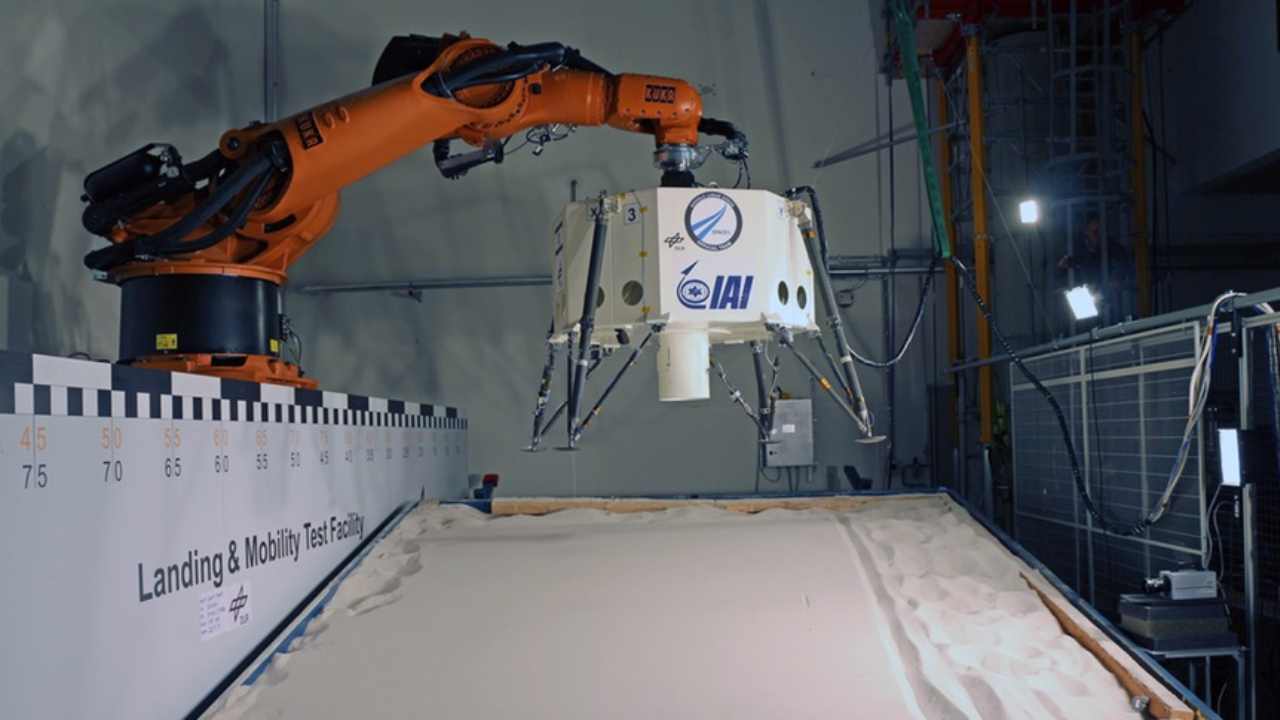A state-owned company, Israel Aerospace Industries, has tied up with a leading German space company to help the European Space Agency’s moon mission reach its destination. The Israeli company will develop a lunar lander
similar to Beresheet
— an earlier spacecraft it built in partnership with Israeli non-profit venture SpaceIL, which is
due to launch next month
from Cape Canaveral, Florida. [caption id=“attachment_5748231” align=“alignnone” width=“1280”] Yariv Bash (right), Yonatan Winetraub (middle) and Kfir Damari (left), founders of SpaceIL, insert a time capsule into the Genesis spacecraft on 17 December. Image credit: Yoav Weiss[/caption] ESA’s German contractor OHB will manage scientific instruments that will be fitted on the lander as well as operations of the lander with the ESA, the Jerusalem Post
reports
. “IAI is proud to partner with a leading global satellite company and cooperate with the German and European space agencies. We are proud to continue leading the Israeli space industry to new heights and are looking forward greatly to the
launch of Beresheet
to space and its journey to the moon next month,” Nimrod Sheffer, CEO of IAI,
told
the Post. While no financial details were disclosed, the agreement could be worth tens of millions of dollars, the
report
says. [caption id=“attachment_5988401” align=“alignnone” width=“1280”]
Yariv Bash (right), Yonatan Winetraub (middle) and Kfir Damari (left), founders of SpaceIL, insert a time capsule into the Genesis spacecraft on 17 December. Image credit: Yoav Weiss[/caption] ESA’s German contractor OHB will manage scientific instruments that will be fitted on the lander as well as operations of the lander with the ESA, the Jerusalem Post
reports
. “IAI is proud to partner with a leading global satellite company and cooperate with the German and European space agencies. We are proud to continue leading the Israeli space industry to new heights and are looking forward greatly to the
launch of Beresheet
to space and its journey to the moon next month,” Nimrod Sheffer, CEO of IAI,
told
the Post. While no financial details were disclosed, the agreement could be worth tens of millions of dollars, the
report
says. [caption id=“attachment_5988401” align=“alignnone” width=“1280”] Versions of the SpaceIL lander built by IAI, which is scheduled for launch in February this year, will be offered to the ESA to carry payloads to the moon’s surface. Image courtesy: IAI[/caption] Collaborative missions like these are part of ESA’s
in-situ resource utilization
(ISRU) project, through which the agency is exploring ways to produce water or oxygen on the moon. The ESA has set itself a target to find a strategy to do this by 2025.ESA’s
ISRU mission
involves sending landers to the moon to test technologies that produce oxygen, water and other
raw materials from lunar soil
, and analyze samples of the moon’s terrain. In the view of many space agencies including the ESA, these technologies are crucial to human settlements sustaining themselves on the moon, Mars or any astronomical body that isn’t Earth.
Versions of the SpaceIL lander built by IAI, which is scheduled for launch in February this year, will be offered to the ESA to carry payloads to the moon’s surface. Image courtesy: IAI[/caption] Collaborative missions like these are part of ESA’s
in-situ resource utilization
(ISRU) project, through which the agency is exploring ways to produce water or oxygen on the moon. The ESA has set itself a target to find a strategy to do this by 2025.ESA’s
ISRU mission
involves sending landers to the moon to test technologies that produce oxygen, water and other
raw materials from lunar soil
, and analyze samples of the moon’s terrain. In the view of many space agencies including the ESA, these technologies are crucial to human settlements sustaining themselves on the moon, Mars or any astronomical body that isn’t Earth.
ESA's Germany partner, Israel Aerospace company to assist in upcoming moon mission
tech2 News Staff
• January 30, 2019, 09:43:58 IST
While no financial details were disclosed, the deal could reportedly be worth tens of millions of dollars.
Advertisement
)
End of Article